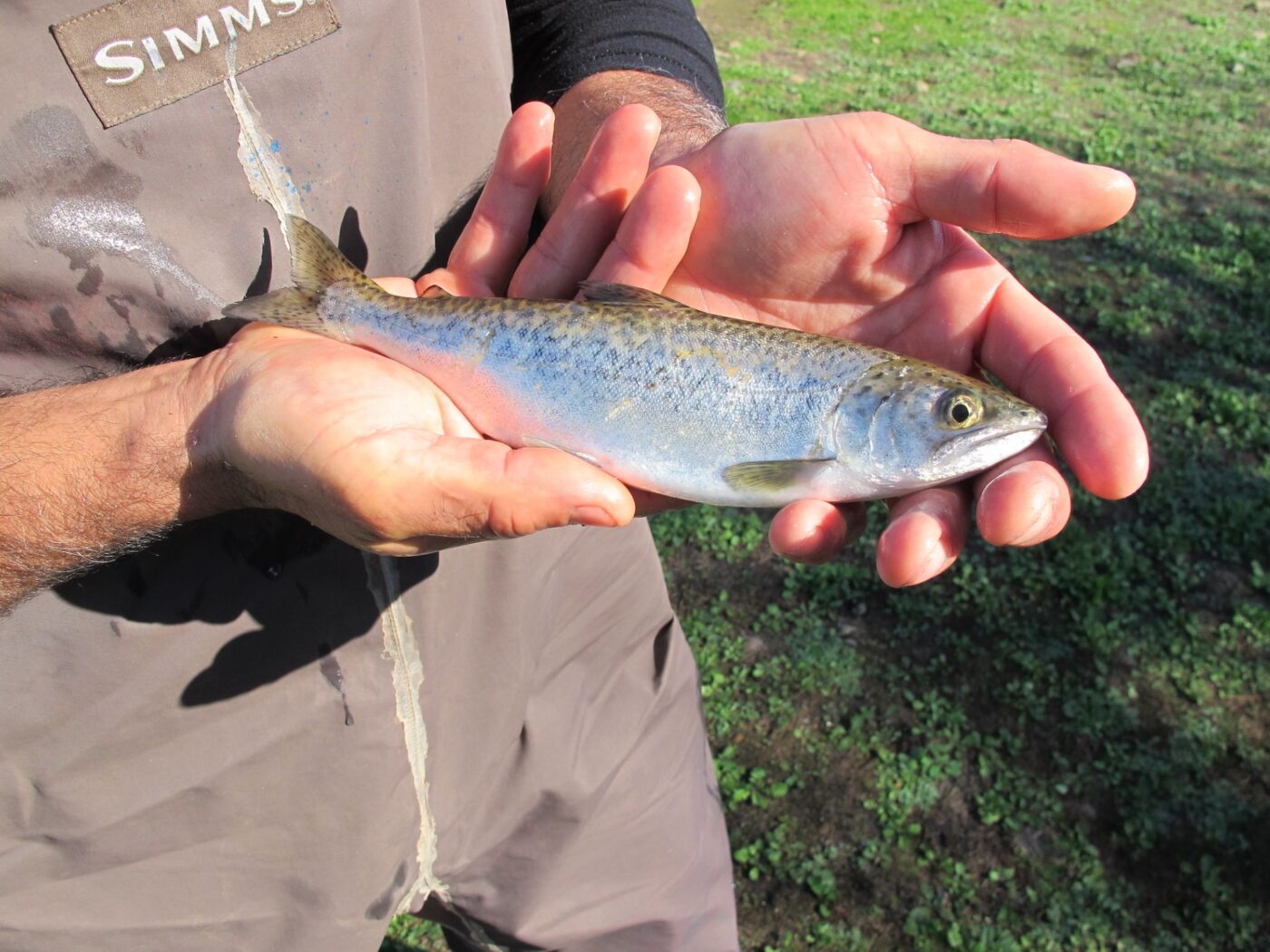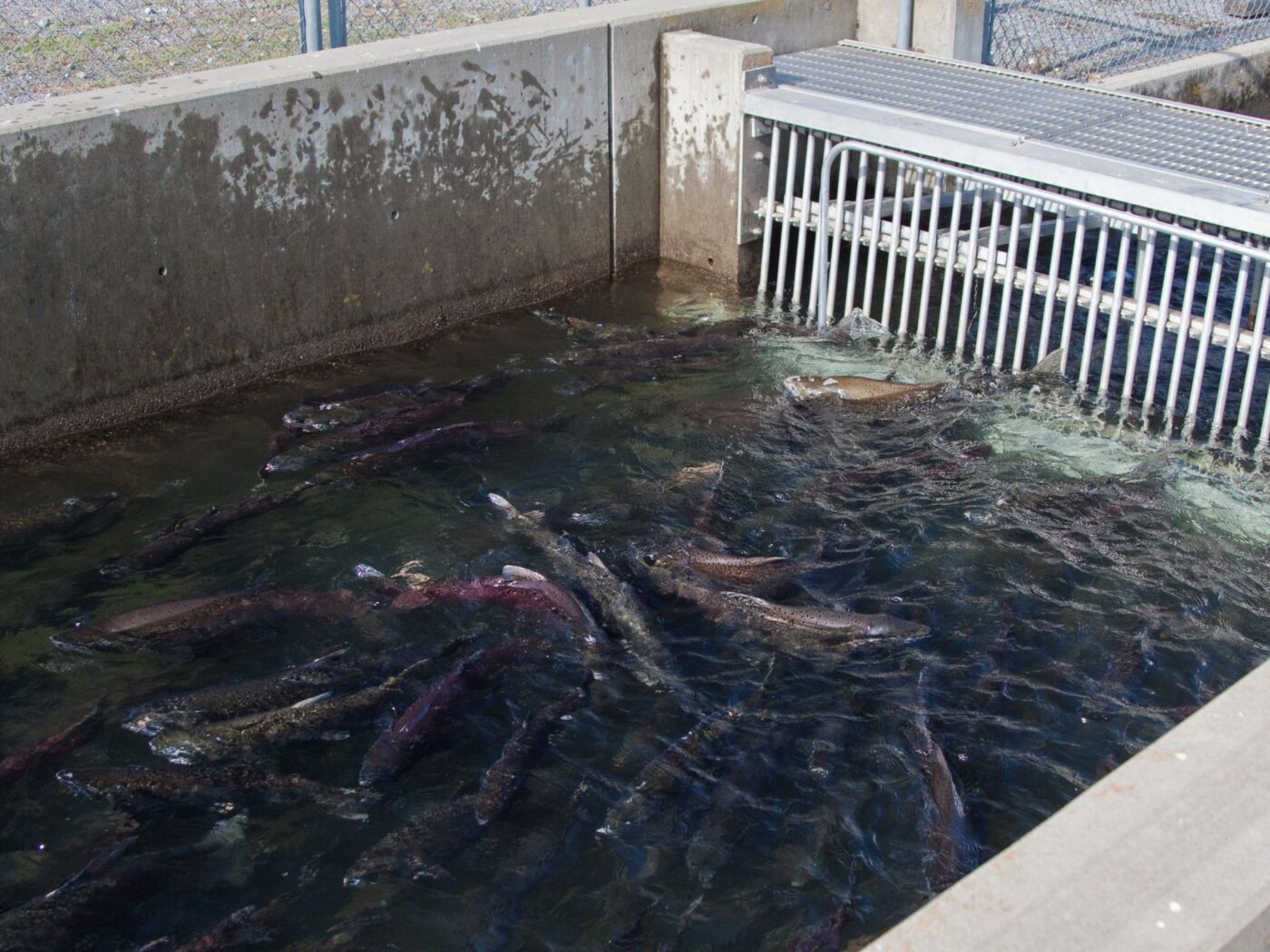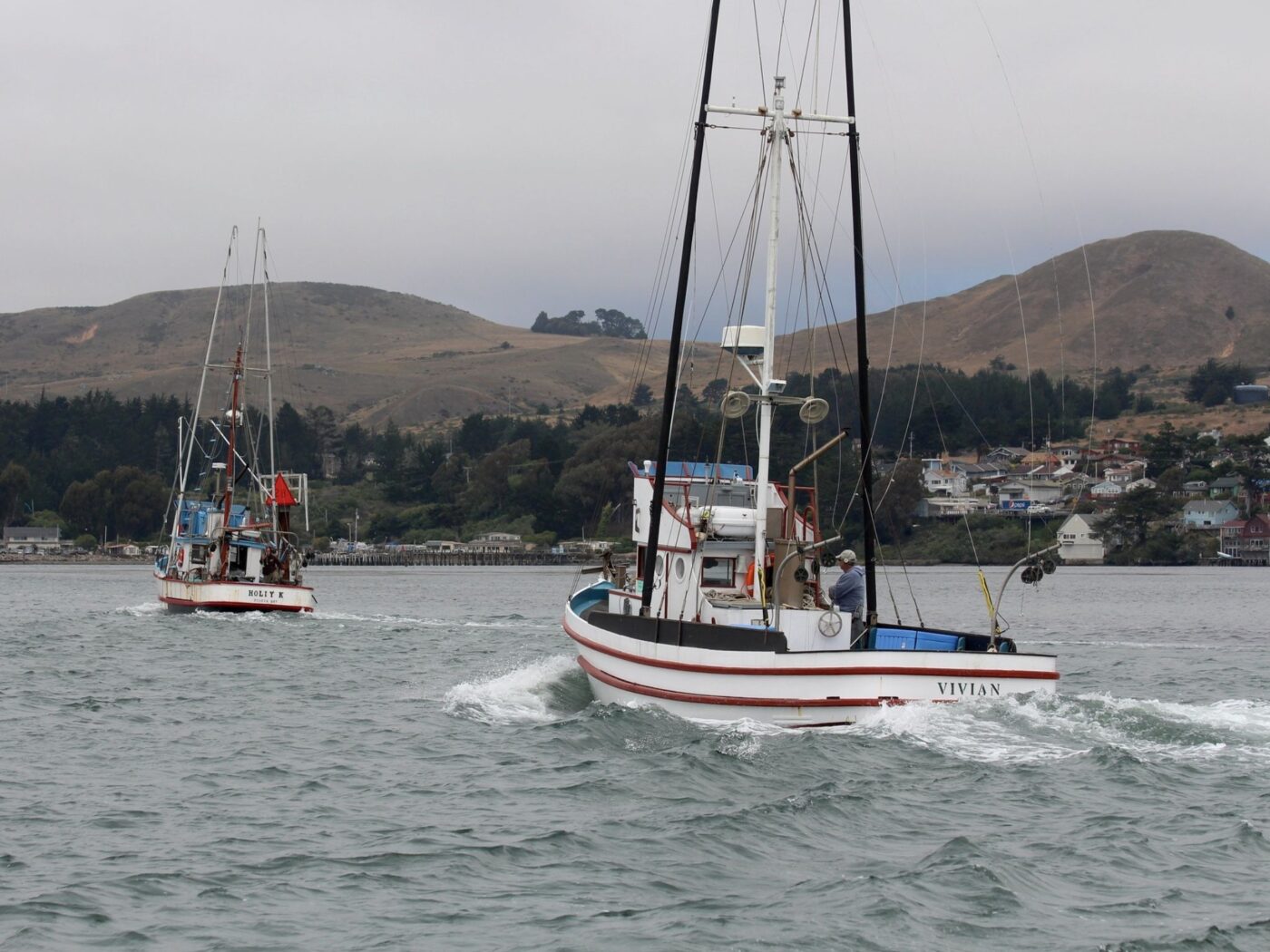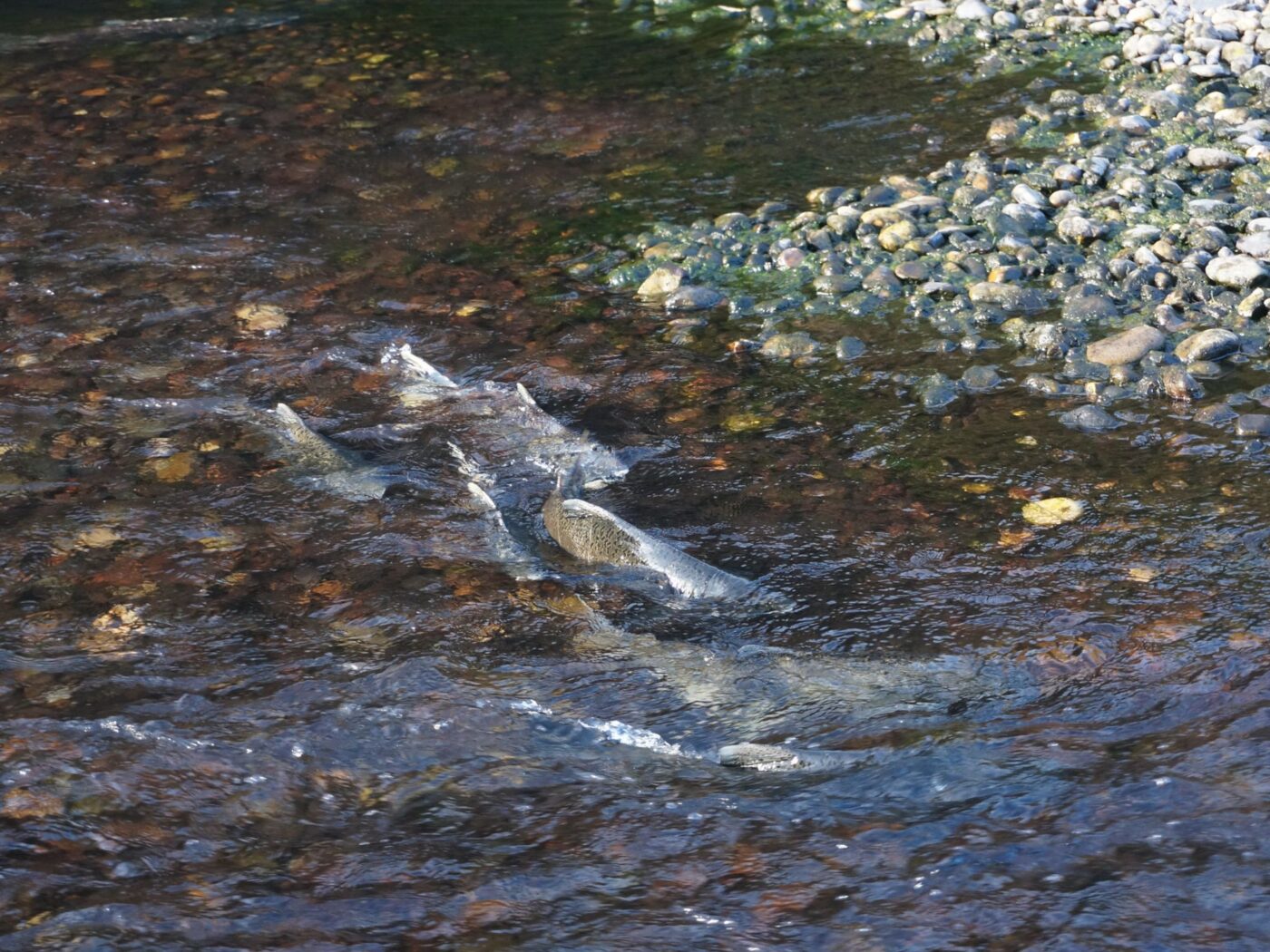Monday July 8, 2024

The age at which an animal reaches adulthood plays an important role in shaping populations. This defining age may vary between fish raised in a hatchery – with the luxuries of reliable access to food and protection from predators – and fish that are roughing it out in the wild. These differences, in turn, could impact the productivity and sustainability of fisheries. Understanding how hatcheries may be shifting the maturation age of fish is critical for their conservation. To this end, a recent study in California sought to investigate whether winter-run Chinook salmon (Oncorhynchus tshawytscha) reared in a conservation hatchery matured at different ages than their wild counterparts (Chen et al. 2023). The results of their investigation suggest that there is, indeed, variation between the age structures of hatchery and wild populations, a finding which has important implications for management.

A yearling Chinook salmon (Oncorhynchus tshawytscha).
The goals of fish hatcheries vary and may include supporting commercial or recreational fisheries or assisting in the conservation or recovery of threatened or endangered species. As is the case for all animals raised in a captive setting, the practices implemented in a hatchery may lead to inadvertent selection for specific traits. For example, fish reared in hatcheries may develop dietary preferences that are disadvantageous in the wild. This type of selection may also influence the rate at which fish mature into adults, a change that is of particular concern for population stability. In nature, more diversity within a population often means a better ability to respond to changes, and fish populations with a wider range of age classes are generally more resilient to “bad years” in which survival may be low. Because hatchery fish have been known to exhibit “precocious” development and mature more rapidly than wild fish, the release of hatchery fish has the potential to reduce the diversity of a population’s age structure.

Chinook salmon in a hatchery fish ladder.
To evaluate whether this may be happening in the endangered winter-run Chinook salmon population in California, the authors of this study compared maturation timing and age structure of the hatchery population with that of the natural population. Using mathematical models and a variety of data sources – including fish ages obtained from scale samples, hatchery origins obtained from coded wire tags implanted into hatchery fish, and numbers of adults returning to the river to spawn each year – they reconstructed the “cohorts” (or populations) of natural-origin and hatchery-origin fish in each year from 2002 through 2015. They also applied models to estimate the maturation schedules of males and females in the hatchery cohort compared to the wild cohort and the impacts of the salmon fishery on the hatchery versus wild fish.
The results of their modeling revealed several interesting findings. First, hatchery fish appeared to mature more often at age-3 compared to wild fish. This was particularly true for males, which had a much lower age-3 maturation rate among the wild cohort. Second, they found that age-3 Chinook were most impacted by recreational fisheries, whereas age-4 Chinook were most impacted by commercial fisheries. This meant that differences in age structure from year to year in the wild population led to different levels of exposure to the fishery. In addition, the model results suggested that the hatchery cohorts had a narrower range of ages. In particular, very few fish older than age-3 were seen in the hatchery cohorts, whereas fish more commonly reached age-4 in the wild cohorts.

Salmon fishing boats on the California coast.
In salmon, the age at which an individual reaches maturity is influenced by both genetics and environment. These factors can both be influenced by hatchery practices, and the data analyzed in this study suggest that this has, indeed, occurred for winter-run Chinook salmon. Just as a diverse investment portfolio reduces risk exposure, greater variation in age of maturity reduces risk for a salmon population. As such, the lower diversity in age at maturity observed in hatchery winter-run Chinook salmon increases risk of spawning failure. In terms of management implications, the tendency of natural-origin Chinook to remain at sea for longer periods before returning to spawn place them at higher risk of capture by ocean fisheries, and their larger size means they are afforded less protection by minimum size limits for harvest than are the younger, smaller hatchery fish.

Spawning Chinook salmon.
Hatcheries can be a vital tool to manage populations of endangered fish. For example, due to the ease with which they can be sampled, hatchery fish often serve as proxies for their wild counterparts when developing management approaches. However, understanding the differences between hatchery-produced fish and wild fish is critical; otherwise, the data used to inform monitoring and management may be biased and inadvertently result in negative impacts to wild fish. For salmon, it turns out that age is more than just a number – it is a vital piece of information that can help ensure the conservation of populations and the sustainability of fisheries.
Header Image Caption: Wild juvenile Chinook salmon.
This post was featured in our weekly e-newsletter, the Fish Report. You can subscribe to the Fish Report here.
